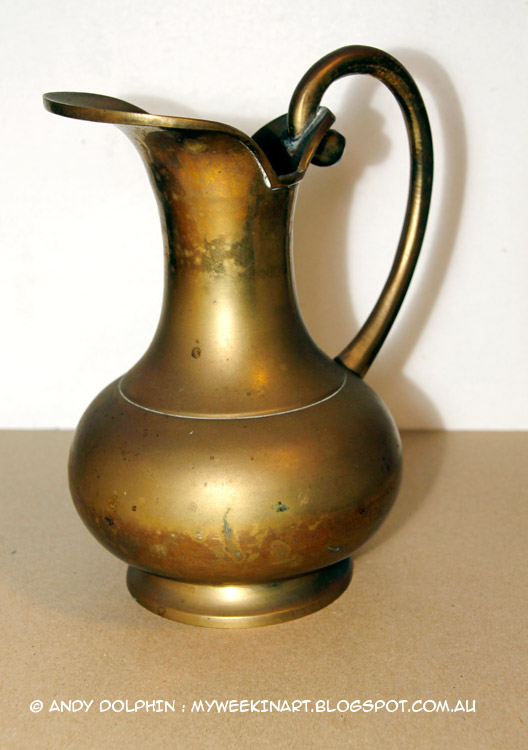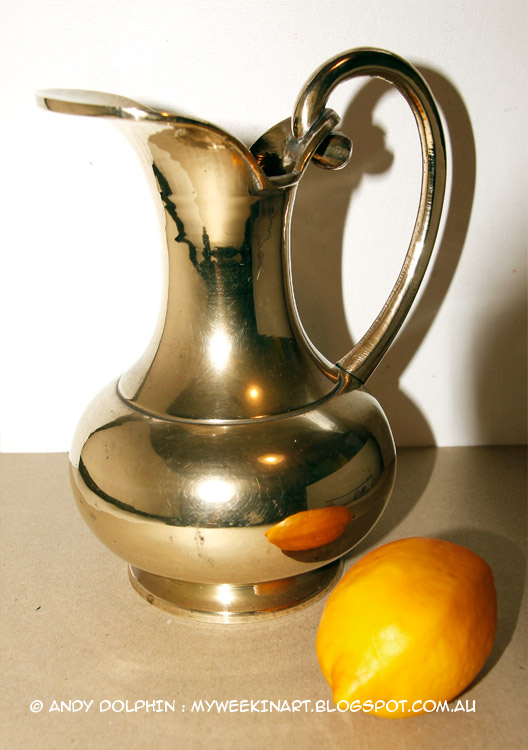I’ve been doing quite a bit of op-shopping since shifting my focus to still life paintings. I now have a small but interesting collection of ornaments including cups, vases and candlesticks. Patience and persistence are key when looking for gems at thrift shops. Many visits result in no purchases at all but every once in a while there will be something that just begs to be purchased.
I popped into a local op-shop a couple of days ago and spotted a brass jug standing among the wood and metal bric-a-brac. I loved the shape and since I’m particularly interested in including brass objects in still life paintings, I had to have it.
Apparently these wide-mouthed pitchers are called ewers. This one, I believe, was made in India. It’s solid brass, stands around 20cm tall and weighs over half a kilogram. Online values for seemingly identical ewers range from around $15 to over $90. I think the lower price is more reflective of the true value.
Brass is often lacquered to prevent tarnishing but the lacquer coating eventually breaks down in some areas, leaving a combination of shiny and tarnished metal. In this case, all vertical and upward-facing surfaces were completely tarnished while all downward-facing surfaces were still quite bright. Although this is fairly typical, I didn’t really want to use it like this in paintings, so I decided to clean it up a bit.
Here’s the before and after pics…
I removed the lacquer with lacquer thinners (this is definitely an outdoor job), then used car polish and elbow grease to bring the brass to an overall level of brightness. If this were a display piece, I would polish it further to remove remaining spots of heavy tarnish, then apply a coat of wax to deliver a mirror-like shine and a level of protection. But I don’t want it to be too reflective so I’ll actually leave it to tarnish a bit then hit it with a light coat of either lacquer or wax.
Keep an eye out for it in future paintings.


